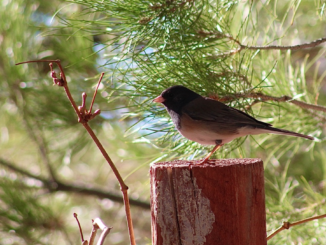By Gabrielle Smith
Believe it or not there are many products today that are made out of paper, much of which become wasted due to human being’s constant use of them and the inconsistency of recycling the paper products that can be recycled.
Unfortunately, the downfall of paper products not being reusable is making them unsustainable and a serious downfall to the environment. So, let us take a moment to really think about how paper products are processed and produced.
The process starts with the cutting down of trees. Today, there are more than three trillion trees on this planet according to the research conducted by the International Weekly Journal of Science. Although there are trillions of trees in the world approximately 15 billion are cut down every year. That’s insane!
Considering that trees are pivotal in supporting life on earth for instance they create oxygen, help to absorb some of the shock brought on by carbon dioxide, and of course they help to maintain natural habitats for a wide range of species around the world. Even with trees being key to survival on earth many humans have no regard for how important they are to a functioning planet.
For a visual let’s think about how much copy paper one tree can produce. Roughly 16 reams of paper can be produced from one tree and each ream contains 500 sheets of copy paper. However, this estimate varies depending on the weight and size of the tree. That is approximately 8,000 sheets of paper from one tree. This is not a lot and since only about half of the worlds copy paper actually gets recycled each year, the majority of it ends up in landfills or becomes incinerated…which you guessed it, causes more pollution. A great way to eliminate this type of pollution is to just simply recycle the copy paper instead of tossing it away in the garbage.
After a tree is cut down, they head to a paper plant and guess what? These plants are not functioning as a sustainable part of the planet unlike the plants that produce oxygen. A paper plant uses large amounts of water and electricity each day in order to manufacture the paper products. This process pollutes the air and water all around the factory. Which, in hindsight, pollutes the air and water that humans and animals use.
Once the paper product is done being produced, there is the need to transport them to wherever they need to be. The transportation of these products emits carbon dioxide into the air creating more pollution.
How can we reduce, reuse, recycle?
Well, there are many things that can be recycled however there are certain paper products that cannot be recycled after being used. For example, after paper towels are used, they can no longer be adapted into something else, which means that they are tossed into the trash and taken to the nearest landfill to help pollute the world even more (gross!). A great way to replace paper towels in the household is to use cloths and/or rags. These have a multipurpose use as they can be used for both cleaning up messes and replacing napkins. These are able to be washed and reused which will not only cut down on the pollution that paper towels/napkins produce but also help to save money in the future.
Next, stop using facial tissues since these products happen to be another thing that cannot be recycled after its use. A great way to replace this product in the household is to invest in or make handkerchiefs. These can easily be placed inside a small box so that it would be just like any normal facial tissue box. Just as the cloths and rags can be washed and reused so can the handkerchiefs. These can be bought brand new, thrifted, or made out of old pillowcases or sheets.
There are certain paper products that just are not able to be recycled. Instead of filling up landfills with these products why not just put an end to using them altogether. Finding replacements for everyday household items is a great way to limit your paper product use. The little things make a difference too. It is important to do your part in reducing pollution on this earth and remember, there is no Planet B.


